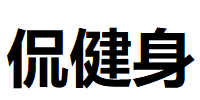What’s the Difference Between Tabata and HIIT?
What’s the Difference Between Tabata and HIIT? Think of it as the difference between “special forces training”and “regular military drills.”
Tabata and HIIT (High-Intensity Interval Training) are both highly efficient workout styles, but they differ in structure, intensity, and application.
1. Basic Definitions
HIIT (High-Intensity Interval Training):
A broad term for any training model alternating between high-intensity exercise + rest intervals. Duration and intensity are flexible and customizable (e.g., 30 seconds of sprinting + 1 minute of jogging).
Tabata:
A specific subset of HIIT developed in 1996 by Japanese scientist Dr. Izumi Tabata (Tabata Protocol), originally designed to boost the endurance of Olympic speed skaters. It strictly follows a 20-second ultra-high-intensity exercise + 10-second rest pattern, repeated for 8 rounds (total 4 minutes), with no flexibility in timing.
2. Time and Structure
HIIT:
Flexible duration: Typically 15-30 minutes, with adjustable work-to-rest ratios (e.g., 1:1 or 1:2).
Diverse exercises: Options include running, cycling, burpees, squat jumps, etc.
Tabata:
Fixed 4-minute protocol: Only 8 rounds of 20 seconds all-out effort + 10 seconds rest.
Single or compound movements: Focuses on one exercise (e.g., rowing machine, sprinting) or a fixed combo, requiring maximum intensity within each 20-second window.
3. Intensity Differences
HIIT:
High but adjustable intensity. For example:
Work phases: Reach 80-95% of max heart rate.
Rest phases: Drop to 60-70% of max heart rate.
Tabata:
Extreme intensity: Requires 170% of VO₂max (near physical limit) during 20-second bursts, with only 10 seconds of rest.
Challenges both cardio and muscular endurance, pushing close to anaerobic thresholds.
4. Training Effects
HIIT:
Improves aerobic and anaerobic capacity, enhances cardiovascular health, and burns fat efficiently (via EPOC—Excess Post-Exercise Oxygen Consumption).
Ideal for fat loss and boosting overall athletic performance.
Tabata:
Focuses on anaerobic endurance and explosive power, significantly improving lactic acid tolerance and VO₂max.
Fat-burning relies on exercise selection and post-workout metabolism (best combined with other training).
5. Target Audience
HIIT:
Suitable for most fitness levels, with scalable intensity for beginners to advanced trainees.
Tabata:
Only recommended for intermediate to advanced athletes due to extreme demands. Beginners or those with weak cardio may risk injury or fail to complete the workout.
6. Recommendations
Choose HIIT if you prefer flexibility, gradual progress, or varied routines.
Try Tabata if you’re time-crunched and seek extreme challenges (ensure a strong fitness base first).
Beginners: Start with standard HIIT, then transition to Tabata after building endurance.
Key Takeaway
Both methods use “high intensity + intervals” to maximize efficiency, but Tabata is an extreme, rigid version of HIIT—much like comparing “special forces training” to “regular drills.”

微信扫一扫打赏

支付宝扫一扫打赏
健身最难的就是坚持,加博主微信:jsnrjx,邀请你进健身打卡群。与200多位健友一起健身打卡,从此告别三天打鱼,两天晒网。


